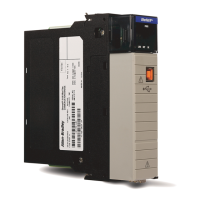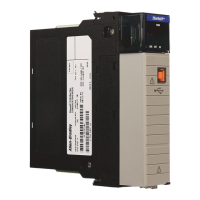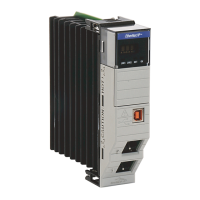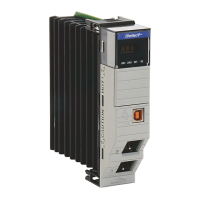Rockwell Automation Publication 1756-UM004C-EN-P - June 2021 23
Chapter 1 ControlLogix EtherNet/IP Network Device Overview
Parallel Redundancy
Protocol
Parallel Redundancy Protocol (PRP) is defined in international standard
IEC 62439-3 and provides high-availability in Ethernet networks. PRP
technology creates seamless redundancy by sending duplicate frames to two
independent network infrastructures, which are known as LAN A and LAN B.
A PRP network includes the following components.
For more information about PRP, see the EtherNet/IP Parallel Redundancy
Protocol Application Technique, publication ENET-AT006
.
Device Level Ring (DLR) Device Level Ring (DLR) is an EtherNet/IP protocol defined by the Open
DeviceNet Vendors’ Association (ODVA). DLR provides a means to detect,
manage, and recover from single faults in a ring-based network.
A DLR network includes the following types of ring nodes.
Depending on their firmware capabilities, both devices and switches can
operate as supervisors or ring nodes on a DLR network. Only switches can
operate as redundant gateways.
For more information about DLR, see the EtherNet/IP Device Level Ring
Application Technique, publication ENET-AT007
.
Component Description
LAN A and LAN B Redundant, active Ethernet networks that operate in parallel.
Double attached node
(DAN)
An end device with PRP technology that connects to both LAN A and LAN B.
Single attached node (SAN)
An end device without PRP technology that connects to either LAN A or LAN B.
A SAN does not have PRP redundancy.
Redundancy box (RedBox)
A switch with PRP technology that connects devices without PRP technology to
both LAN A and LAN B.
Virtual double attached
node (VDAN)
An end device without PRP technology that connects to both LAN A and LAN B
through a RedBox.
A VDAN has PRP redundancy and appears to other nodes in the network as a
DAN.
Infrastructure switch
A switch that connects to either LAN A or LAN B and is not configured as a
RedBox.
Node Description
Ring supervisor
A ring supervisor provides these functions:
Manages traffic on the DLR network
Collects diagnostic information for the network
A DLR network requires at least one node to be configured as ring supervisor.
By default, the supervisor function is disabled on supervisor-capable devices.
Ring participants
Ring participants provide these functions:
Process data that is transmitted over the network.
Pass on the data to the next node on the network.
Report fault locations to the active ring supervisor.
When a fault occurs on the DLR network, ring participants reconfigure themselves
and relearn the network topology.
Redundant gateways
(optional)
Redundant gateways are multiple switches connected to a single DLR network and
also connected together through the rest of the network.
Redundant gateways provide DLR network resiliency to the rest of the network.

